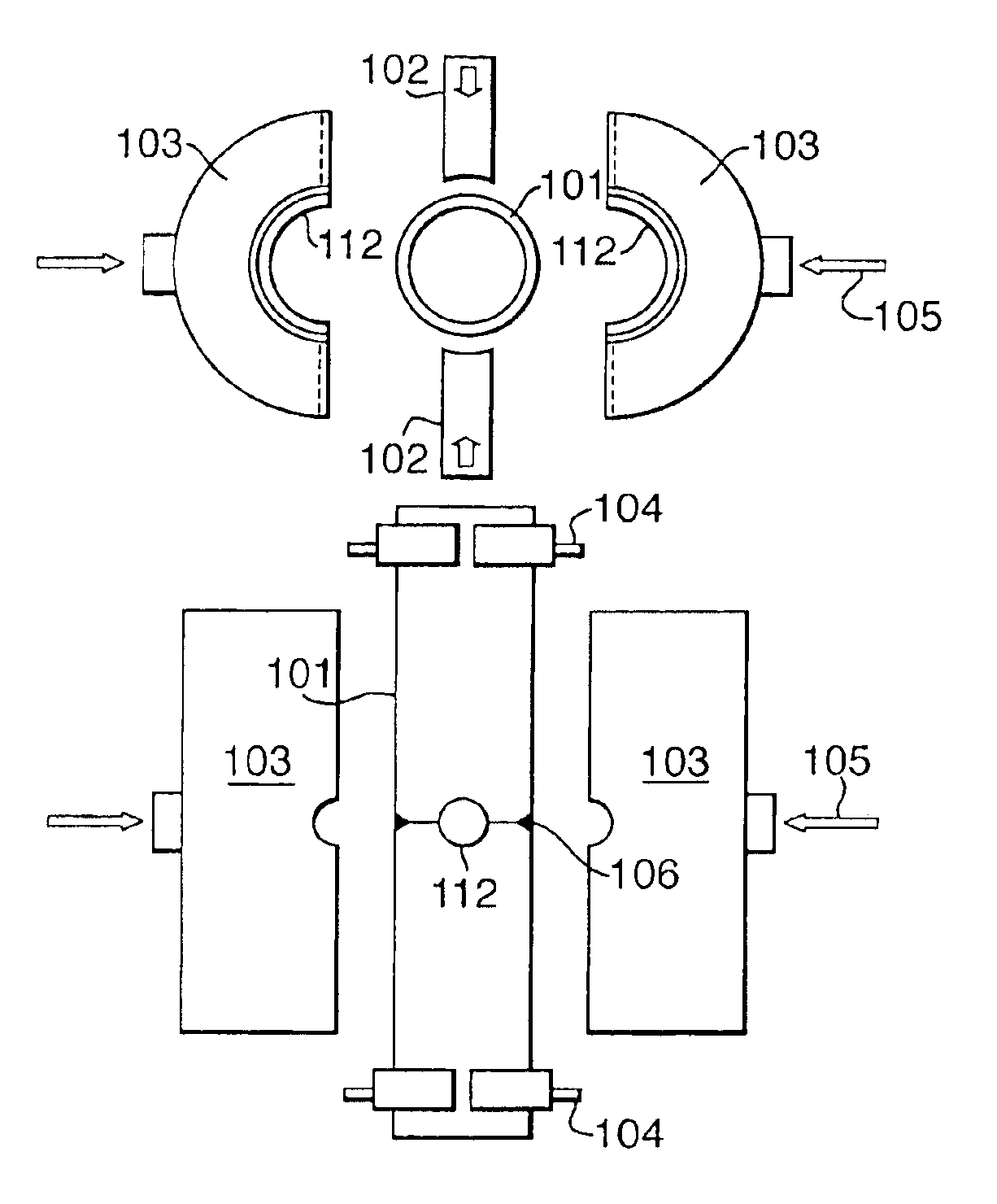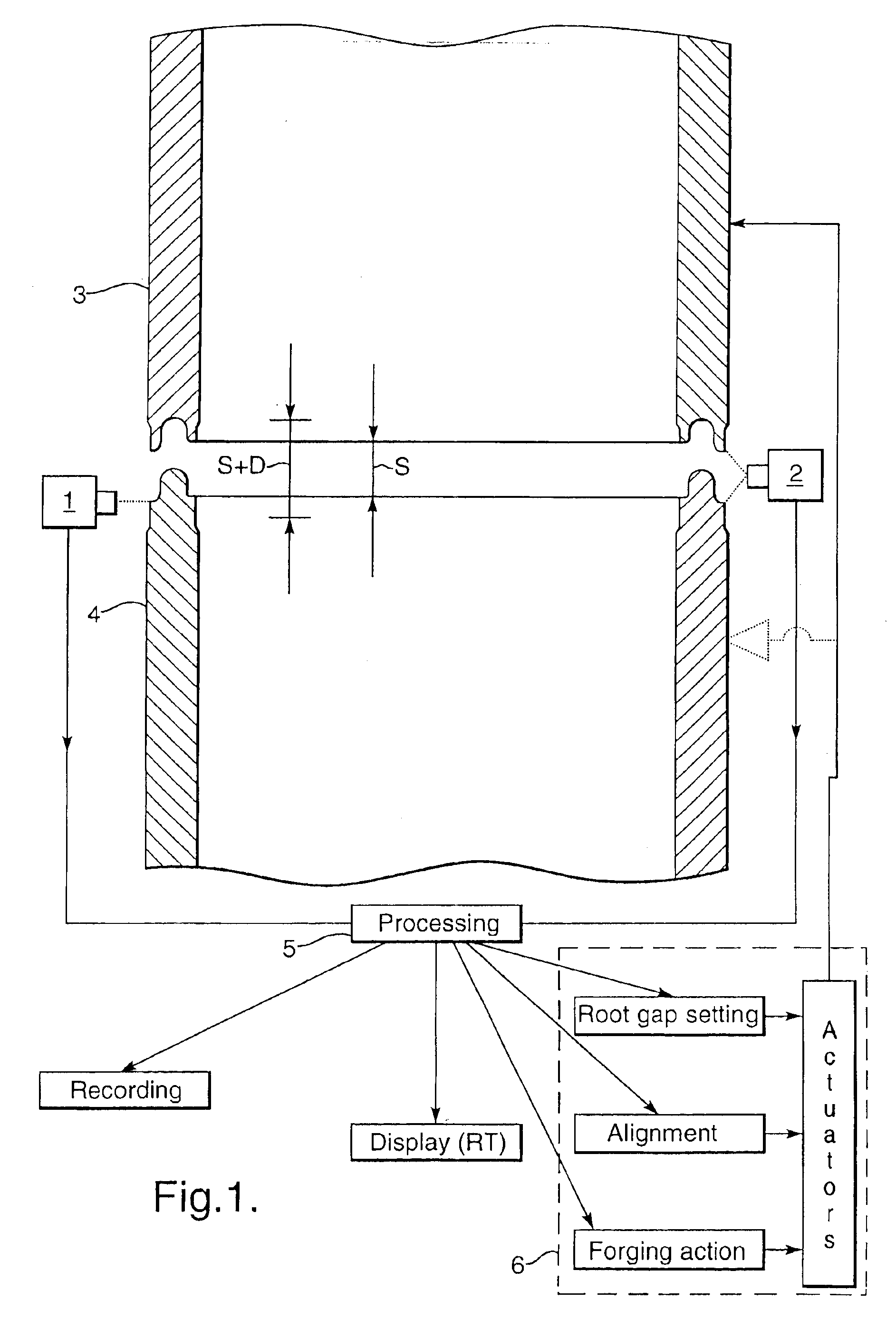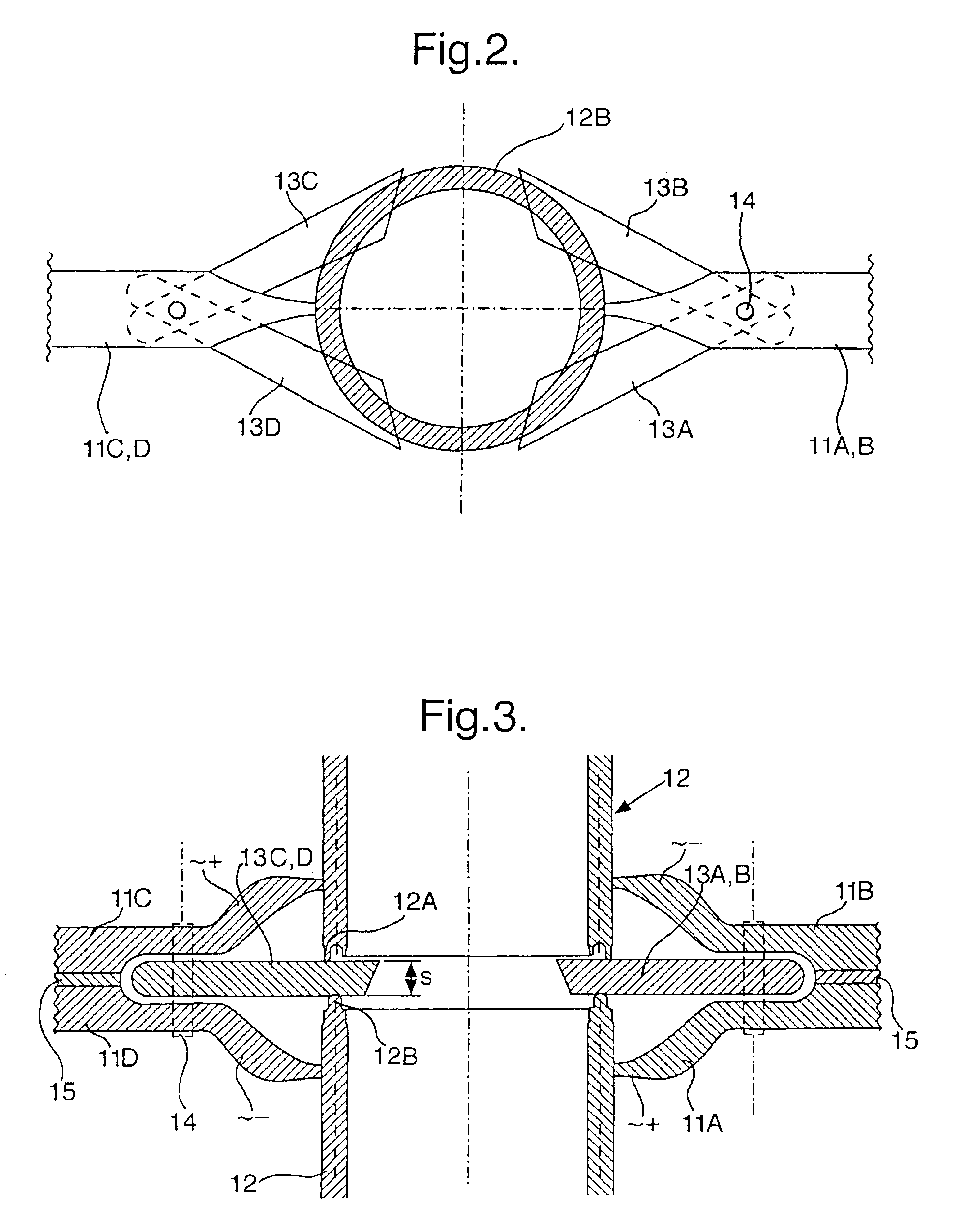EMAT weld inspection
a technology of welds and inspection methods, applied in the field of weld inspection methods and systems, can solve the problems of inability to quickly put, inability to use robotic transport apparatuses, and fixed ring-shaped construction, and achieve the effect of fast weld inspection
- Summary
- Abstract
- Description
- Claims
- Application Information
AI Technical Summary
Benefits of technology
Problems solved by technology
Method used
Image
Examples
Embodiment Construction
[0046]As shown in FIG. 1 the positions of the tubular ends 3 and 4 that are to be forge welded together are monitored by cameras 1 and 2 which are coupled to a camera signal processor 5 which automatically controls a gripping assembly 6, such that the spacing S between the heated tubular ends 3A and 4A is well defined during the heat up phase and the tubular ends are moved towards each other when a pyrometric control unit indicates that the tubular ends have reached a predetermined minimum and / or maximum temperature along at least a substantial part of the circumference thereof, whereupon the gripping assembly is activated to move the tubular ends 3A and 4A towards each other over a predetermined distance (S+D) which exceeds said spacing (S) with an additional distance (D) of less than a few millimeters, such that a forge weld is obtained of a substantially equal and high quality over the entire circumference of the forge welded ends and only minimal external and / or internal upsets ...
PUM
| Property | Measurement | Unit |
|---|---|---|
| Length | aaaaa | aaaaa |
| Length | aaaaa | aaaaa |
| Length | aaaaa | aaaaa |
Abstract
Description
Claims
Application Information
 Login to View More
Login to View More - R&D
- Intellectual Property
- Life Sciences
- Materials
- Tech Scout
- Unparalleled Data Quality
- Higher Quality Content
- 60% Fewer Hallucinations
Browse by: Latest US Patents, China's latest patents, Technical Efficacy Thesaurus, Application Domain, Technology Topic, Popular Technical Reports.
© 2025 PatSnap. All rights reserved.Legal|Privacy policy|Modern Slavery Act Transparency Statement|Sitemap|About US| Contact US: help@patsnap.com



